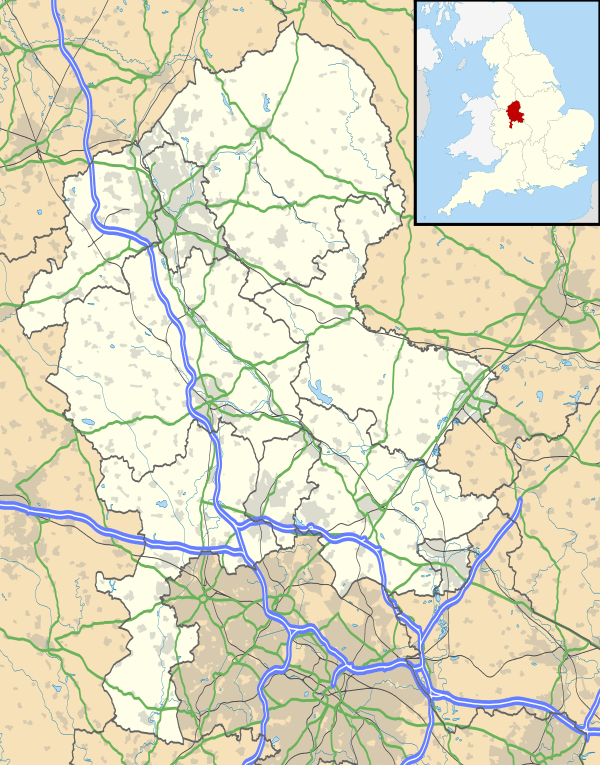Swindon, Staffordshire
| Swindon | |
 Swindon |
|
| Population | 1,231 (2011)[1] |
|---|---|
| OS grid reference | SO862905 |
| Civil parish | Swindon |
| District | South Staffordshire |
| Shire county | Staffordshire |
| Region | West Midlands |
| Country | England |
| Sovereign state | United Kingdom |
| Post town | Dudley |
| Postcode district | DY3 |
| Police | Staffordshire |
| Fire | Staffordshire |
| Ambulance | West Midlands |
| EU Parliament | West Midlands |
|
|
Coordinates: 52°30′47″N 2°12′14″W / 52.51293°N 2.20383°W
Swindon is a village and civil parish located in Staffordshire, just outside the West Midlands conurbation. The nearest major town is Dudley, approximately five miles eastwards. It stands halfway between the small town of Kingswinford and village of Wombourne.
Historically, Swindon was part of Seisdon rural district, but in 1974 was incorporated into the new local authority of South Staffordshire.
Schools
- St John's CofE Primary School
Churches
- Ebeneezer United Reformed Church
- St John's Church of England Church
Shops and Pubs
History
Swindon was formerly part of the parish of Wombourne, but was administratively distinct. A manor belonged to Englefield family, the lords of Englefield, Berkshire, as part of the manor of Himley. This manor was demised to John de Somery, Baron Somery the tenant in chief ub c.1316 and by 1346 passed to his nephew John de Sutton II, who had succeeded to the barony of Dudley. The manor then descended as part of the family estates in the area at least until William Humble Eric Ward, 3rd Earl of Dudley sold his local estates in 1947.[2]
Chasepool is mentioned in Domesday Book as part of the property of William Fitz-Ansculf, lord of Dudley, but was waste on account of the forest. It was one of the hays (enclosed areas for hunting) of Kinver Forest. The area passed into the hands of the lords of Dudley in the 15th century, initially as lesses of the herbage and pannage. It was granted to Edward Sutton, 4th Baron Dudley when the family property was restored to him in 1555 and devolved as part of the family estates until 1947 in the same was as Swindon. By 1600 there was a lodge (Chasepool Lodge), leased to Edward Green, who probably gave his name to the adjacent Greensforge. his son also Edward gave a lease for lives of it to his son Dud Dudley.[3]
Iron Works
Swin or Swindon Forge was once a fulling mill then a corn mill belonging to Halesowen Abbey. This was converted into a finery forge, perhaps in the 1620s. This was leased to Thomas Foley in 1647 and passed to his son Philip with many of his other ironworks in 1669. After he sold it in 1674, it passed through various hands, coming into the hands of Francis Homfray of Oldswinford by the 1720s, remaining in the hands of this family until 1820. The works were much enlarged in the 19th century, so that in 1859 there were 13 puddling furnaces. It was leased in 1866 to E. P. and W. Baldwin, the owners of the Wilden Ironworks. Their successor company amalgamated to form Richard Thomas & Baldwin Ltd, which became part of the nationalised British Steel Corporation, who closed the works in 1976.[4] During World War II many of the village males who worked there were given reserved occupation status as the works was considered vital to the war effort. The works were demolished in the early 1980s to make way for new housing, the developments were named Swin Forge Way and Baldwin Way, Baldwin coming from the name of the works. All that remains today is the canteen which is now used as the village community centre.[5]
The former forge at Greensforge is also within the present parish.
References
External links
External links
![]() Media related to Swindon, Staffordshire at Wikimedia Commons
Media related to Swindon, Staffordshire at Wikimedia Commons